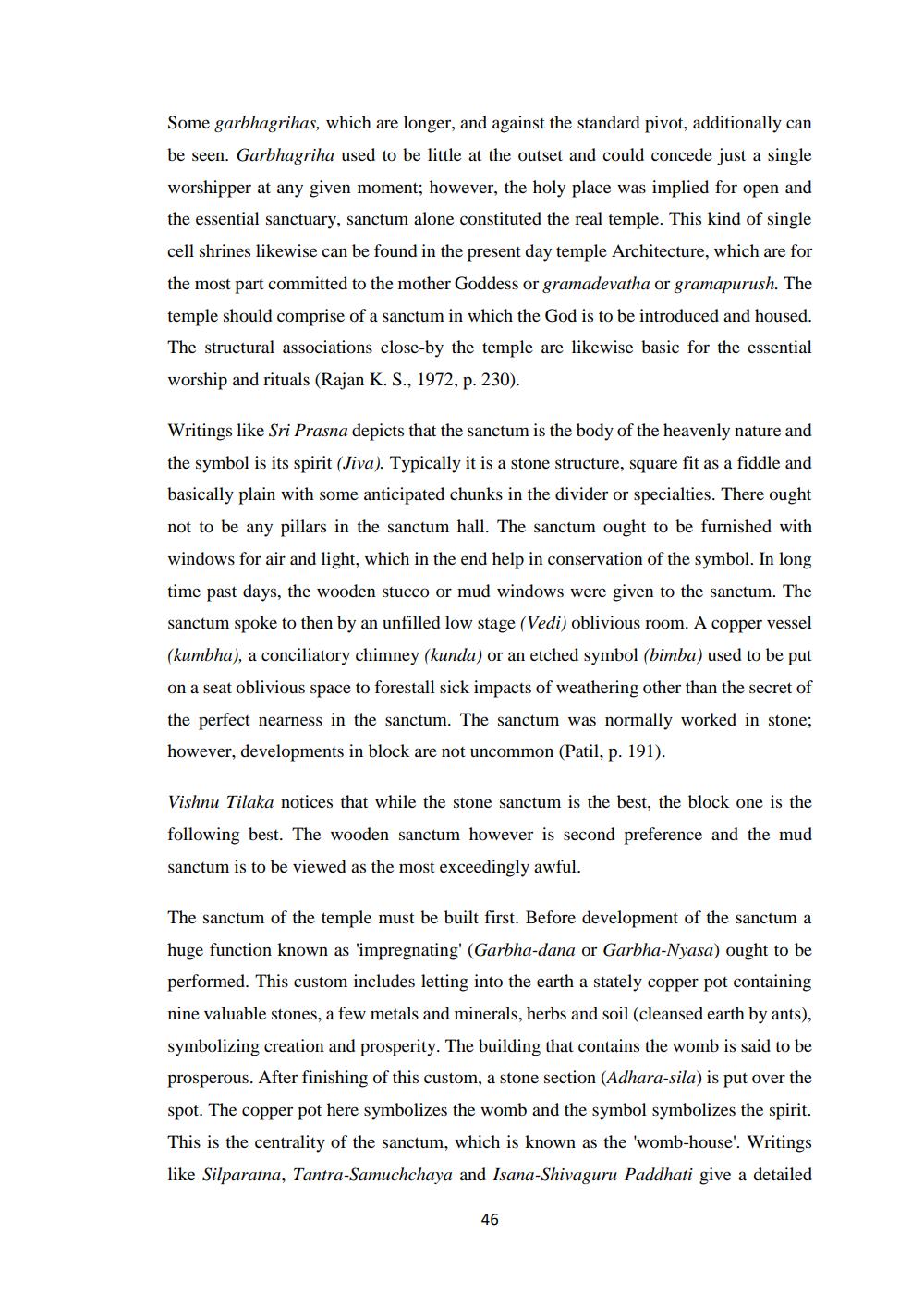________________
Some garbhagrihas, which are longer, and against the standard pivot, additionally can be seen. Garbhagriha used to be little at the outset and could concede just a single worshipper at any given moment; however, the holy place was implied for open and the essential sanctuary, sanctum alone constituted the real temple. This kind of single cell shrines likewise can be found in the present day temple Architecture, which are for the most part committed to the mother Goddess or gramadevatha or gramapurush. The temple should comprise of a sanctum in which the God is to be introduced and housed. The structural associations close-by the temple are likewise basic for the essential worship and rituals (Rajan K. S., 1972, p. 230).
Writings like Sri Prasna depicts that the sanctum is the body of the heavenly nature and the symbol is its spirit (Jiva). Typically it is a stone structure, square fit as a fiddle and basically plain with some anticipated chunks in the divider or specialties. There ought not to be any pillars in the sanctum hall. The sanctum ought to be furnished with windows for air and light, which in the end help in conservation of the symbol. In long time past days, the wooden stucco or mud windows were given to the sanctum. The sanctum spoke to then by an unfilled low stage (Vedi) oblivious room. A copper vessel (kumbha), a conciliatory chimney (kunda) or an etched symbol (bimba) used to be put on a seat oblivious space to forestall sick impacts of weathering other than the secret of the perfect nearness in the sanctum. The sanctum was normally worked in stone; however, developments in block are not uncommon (Patil, p. 191).
Vishnu Tilaka notices that while the stone sanctum is the best, the block one is the following best. The wooden sanctum however is second preference and the mud sanctum is to be viewed as the most exceedingly awful.
The sanctum of the temple must be built first. Before development of the sanctum a huge function known as 'impregnating' (Garbha-dana or Garbha-Nyasa) ought to be performed. This custom includes letting into the earth a stately copper pot containing nine valuable stones, a few metals and minerals, herbs and soil (cleansed earth by ants), symbolizing creation and prosperity. The building that contains the womb is said to be prosperous. After finishing of this custom, a stone section (Adhara-sila) is put over the spot. The copper pot here symbolizes the womb and the symbol symbolizes the spirit. This is the centrality of the sanctum, which is known as the 'womb-house'. Writings like Silparatna, Tantra-Samuchchaya and Isana-Shivaguru Paddhati give a detailed
46




